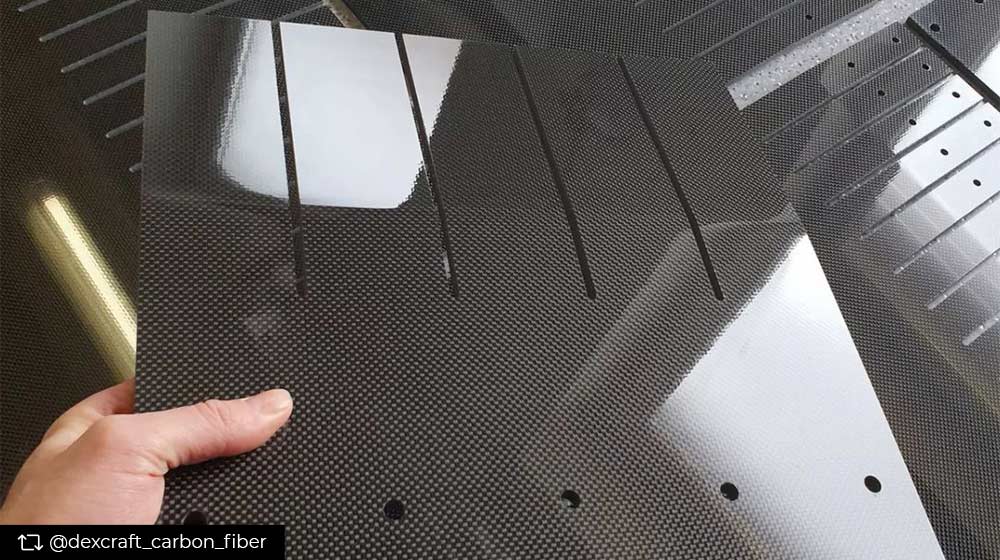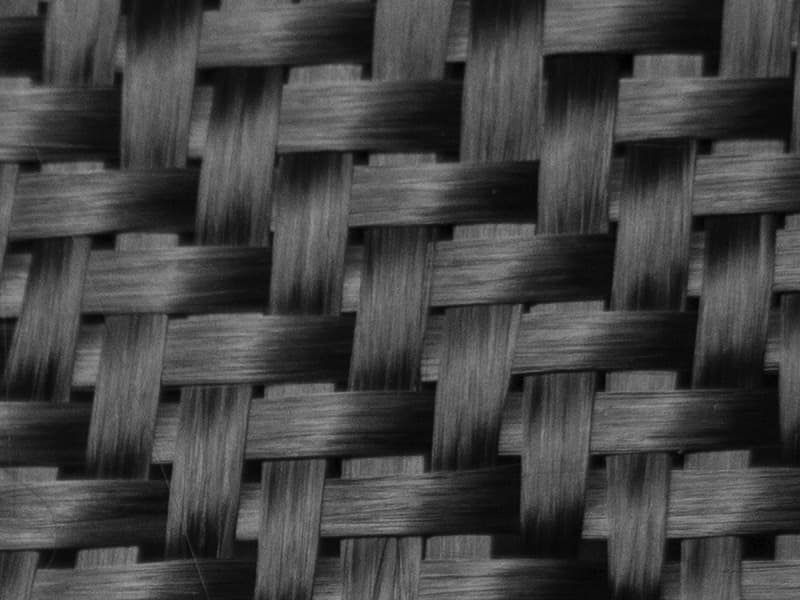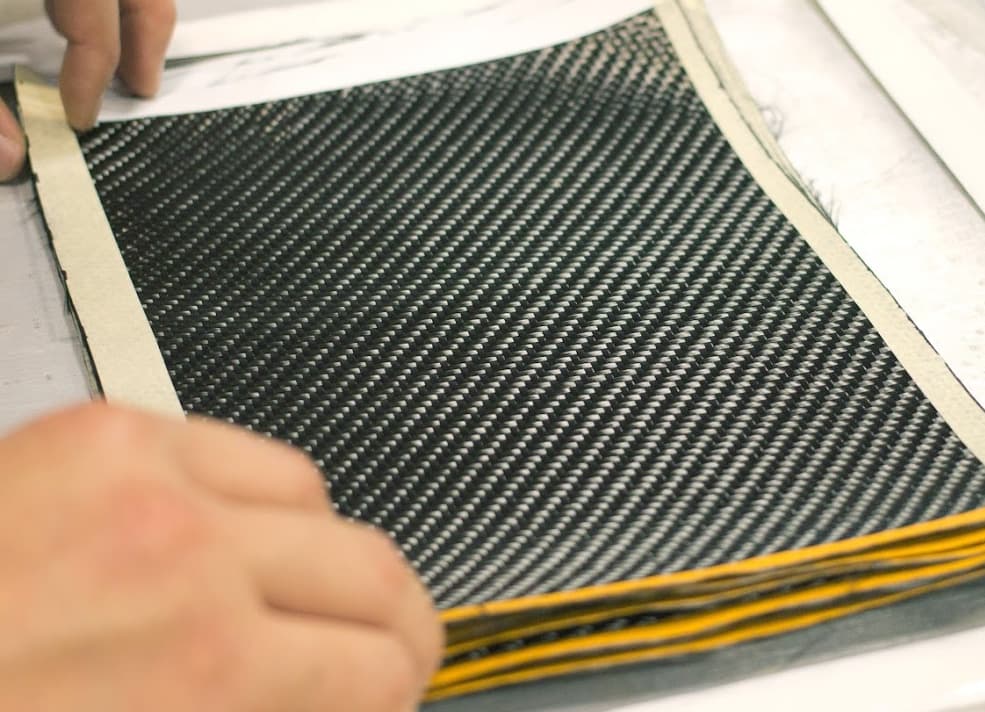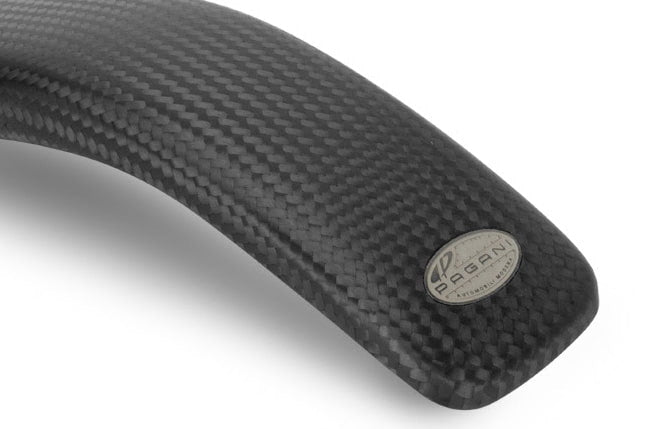Hey, you!
I know you came for our awesome blog post, but we have to let you in on something. Our main business is a shop that sells a ton of unique and cool lifestyle and personal accessories made with REAL carbon fiber.
If you love carbon fiber as much as we do, go explore!
Carbon fiber: the secret ingredient in everything from F1 race cars to your favorite everyday carry gear.
This lightweight powerhouse is rewriting the rules for performance, durability, and style across countless industries. But not all carbon fiber is cut from the same cloth. Different types and weaves unlock a universe of possibilities, each tailored to specific applications. Want to understand how this versatile material is changing the game?
What is Carbon Fiber?
Carbon fiber isn't your average material. It's a high-tech marvel born from intense heat and precision engineering. Picture this: strands thinner than a human hair, yet pound-for-pound, stronger than steel. That's the magic of carbon fiber.
Properties of Carbon Fiber
But it's not just about brute strength. Carbon fiber's versatility is where the real magic happens. This extraordinary material boasts an impressive array of properties that make it the go-to choice for a wide range of applications:
-
Lightweight: Carbon fiber is incredibly light, making it perfect for reducing weight in everything from airplanes to bicycles.
-
Strong: Pound for pound, it's stronger than steel, providing exceptional structural integrity and durability.
-
Stiff: Carbon fiber resists bending and flexing under pressure, making it ideal for applications where rigidity is crucial.
-
Durable: This material is incredibly resistant to wear and tear, ensuring your carbon fiber gear stands the test of time.
-
Corrosion Resistant: Unlike metal, carbon fiber doesn't rust or corrode, making it perfect for harsh environments.
Carbon Fiber Weave Patterns
The way carbon fiber strands are woven together, known as the weave pattern, plays a significant role in the material's overall performance and aesthetics.
-
Plain Weave: The classic checkerboard pattern, offering balanced strength and versatility.
-
Twill Weave: A diagonal pattern known for its flexibility and impact resistance.
-
Satin Weave: A smooth, glossy weave often used for its visual appeal.
Each weave pattern has its strengths and weaknesses, making it suitable for different types of applications. We'll delve into these details further in the following sections.
Carbon Fiber in the Automotive Industry
From the racetrack to the showroom, carbon fiber has become the material of choice for automakers seeking to push the boundaries of performance and luxury. Let's explore how this versatile material is transforming the automotive landscape:
High-Performance Vehicles
In the world of high-performance cars and motorsports, where every gram counts, carbon fiber is a beast in an engineer’s arsenal. Here’s why:
-
Improved Acceleration: Less weight means quicker acceleration off the line and faster lap times.
-
Enhanced Handling: A lighter car is nimbler and more responsive, providing a more engaging and thrilling driving experience.
-
Overall Performance Boost: From body panels and spoilers to suspension components and even entire chassis, carbon fiber helps high-performance vehicles achieve new levels of speed and agility.
Its exceptional strength-to-weight ratio allows engineers to create incredibly light yet remarkably strong components. This weight reduction translates to potentially improved acceleration, enhanced handling, and overall better performance on the track.
Luxury Car Interiors
Beyond its performance benefits, carbon fiber has also become a sought-after material for luxury car interiors. Its unique weave pattern and glossy finish exude a sense of modern elegance and technological sophistication.
Carbon fiber trim and accents are often found on dashboards, center consoles, door panels, and even steering wheels, adding a touch of sportiness and exclusivity to the cabin. This not only enhances the aesthetic appeal of the interior but it’s also a badge of a car's high-performance pedigree.
Electric Vehicles
The rise of electric vehicles (EVs) has presented a unique challenge: battery weight. Carbon fiber's lightweight properties are emerging as a key solution to this challenge. And we migh be seeing this in a Mazda electric vehicle. By replacing traditional materials with carbon fiber, automakers can significantly reduce the weight of EVs, leading to:
-
Increased Range: A lighter EV can travel farther on a single charge, reducing range anxiety and making electric cars more practical for everyday use.
-
Improved Energy Efficiency: Less weight translates to less energy consumption, maximizing the efficiency of the electric powertrain.
Aftermarket Appeal
Carbon fiber's popularity extends beyond the factory floor. Car enthusiasts are embracing carbon fiber aftermarket upgrades to personalize their vehicles and boost performance.
From carbon fiber hoods and spoilers to interior trim kits and even custom wheels, the options are endless. These aftermarket parts not only give cars a unique and aggressive look but can also improve aerodynamics, further reduce weight, and amplify the thrill of driving.
Carbon Fiber in the Aerospace Industry
The aerospace industry has always been a pioneer in pushing the boundaries of materials science and engineering. Carbon fiber has become a cornerstone of modern aerospace design, enabling the creation of lighter, more efficient, and safer aircraft and spacecraft.
Aircraft Components
Carbon fiber has found its way into nearly every corner of modern aircraft, from the fuselage and wings to interior components and even landing gear. By replacing heavier materials like aluminum and steel, carbon fiber helps to significantly reduce the overall weight of the aircraft. This weight reduction translates to a range of benefits:
-
Improved Fuel Efficiency: Lighter aircraft require less fuel to fly, reducing operating costs for airlines and contributing to a smaller carbon footprint.
-
Increased Range: With less fuel needed, aircraft can fly farther distances, opening up new possibilities for long-haul flights and reducing the need for refueling stops.
-
Enhanced Performance: The reduced weight and increased stiffness of carbon fiber components can improve an aircraft's handling, maneuverability, and overall performance.
-
Durability and Longevity: Carbon fiber is highly resistant to fatigue and corrosion, meaning aircraft components made from this material can withstand the rigors of flight for longer periods, requiring less maintenance and repair.
Some examples of carbon fiber applications in aircraft include:
-
Fuselage: The main body of the aircraft, where carbon fiber can significantly reduce weight and improve structural integrity.
-
Wings: Carbon fiber wings are lighter and stiffer than metal wings, offering better aerodynamic performance and fuel efficiency.
-
Interior Components: Carbon fiber is used in seats, panels, and other interior elements to reduce weight and add a modern aesthetic touch.
-
Landing Gear: Carbon fiber landing gear components offer a lighter and more durable alternative to traditional metal parts.
Space Exploration: Reaching for the Stars with Carbon Fiber
The extreme conditions of space travel demand materials that are both lightweight and incredibly strong. Carbon fiber fits the bill perfectly, making it a vital component in spacecraft and satellite design.
-
Structural Components: Carbon fiber is used in various structural components of spacecraft, such as rocket bodies, fuel tanks, and solar panels, where weight reduction is critical for efficient launch and operation.
-
Thermal Protection Systems: The high heat resistance of carbon fiber makes it suitable for use in thermal protection systems that shield spacecraft from the extreme temperatures encountered during atmospheric re-entry.
-
Scientific Instruments: Carbon fiber's stiffness and dimensional stability make it an ideal material for constructing precise scientific instruments used in space exploration missions.
Carbon Fiber in Sports and Recreation
This hardy material is also revolutionizing the world of sports and recreation, helping athletes and enthusiasts achieve new levels of performance, speed, and agility.
Cycling
In the world of cycling, carbon fiber has become synonymous with high-performance. Its lightweight yet incredibly strong nature makes it the ideal material for bike frames, forks, handlebars, and other components.
-
Lighter Weight: Carbon fiber frames can be significantly lighter than their aluminum or steel counterparts, making the bike easier to accelerate, climb hills, and maneuver through tight corners.
-
Increased Stiffness: The high stiffness of carbon fiber translates to more efficient power transfer from the rider to the wheels, maximizing the impact of each pedal stroke.
-
Enhanced Comfort: Despite its stiffness, carbon fiber can be engineered to dampen vibrations, resulting in a smoother and more comfortable ride, even on rough terrain.
Sporting Equipment
Carbon fiber's influence extends far beyond cycling. It's found in a wide range of sporting equipment, helping athletes gain a competitive edge.
-
Tennis Rackets: Carbon fiber rackets are lighter and stiffer than traditional rackets, allowing for faster swings and more powerful shots.
-
Golf Clubs: Carbon fiber shafts offer a unique combination of lightweight feel and high energy transfer, potentially increasing swing speed and distance.
-
Fishing Rods: Carbon fiber fishing rods are sensitive, lightweight, and incredibly strong, allowing anglers to cast farther and fight fish with more control.
Water Sports
Carbon fiber is making a splash in the world of water sports as well. Its lightweight and corrosion-resistant properties make it ideal for boats, kayaks, and surfboards.
-
Boats: Carbon fiber hulls are lighter and more rigid than traditional fiberglass hulls, offering improved speed, agility, and fuel efficiency.
-
Kayaks: Carbon fiber kayaks are easier to carry and maneuver, making them ideal for whitewater kayaking and other demanding disciplines.
-
Surfboards: Carbon fiber reinforced surfboards are lighter and more responsive, allowing surfers to catch more waves and perform more advanced maneuvers.
Carbon Fiber in Other Industries
Carbon fiber's influence extends far beyond the automotive world. Its remarkable properties are being harnessed across a diverse range of industries, creating lighter, stronger, and more innovative products:
-
Construction: Carbon fiber reinforced concrete structures, lighter and more durable bridges.
-
Medical Devices: Prosthetics, orthotics, and medical equipment that are strong and biocompatible.
-
Consumer Electronics: Sleek and lightweight laptops, smartphones, and other gadgets with a modern aesthetic.
-
Fashion & Accessories: High-end watches, jewelry, and other luxury items with a unique, eye-catching appeal.
This is just a glimpse of carbon fiber's potential. As technology advances and manufacturing costs decrease, we can expect to see this versatile material revolutionize even more industries in the years to come.
Frequently Asked Questions About Carbon Fiber Uses
Is carbon fiber stronger than steel?
Yes and no. Carbon fiber has a higher strength-to-weight ratio, meaning it's stronger than steel for the same weight. However, steel is denser, so a thicker piece of steel can be stronger overall.
Where is carbon fiber used the most?
Carbon fiber is widely used in aerospace, automotive, and sporting goods due to its lightweight strength. It's also increasingly popular in consumer electronics and luxury goods for its aesthetic appeal and durability.
Is carbon fiber expensive?
Yes, carbon fiber is generally more expensive than traditional materials like steel or aluminum due to its complex manufacturing process and high-performance properties. But costs are gradually decreasing as technology advances.
Carbon Fiber: More Than Just a Material
Carbon fiber is a symbol of innovation, quality, and a passion for pushing boundaries. At Carbon Fiber Gear, we're committed to bringing you the best of this incredible material in our curated collection of premium carbon fiber accessories.
Whether you're a gearhead, an athlete, or a tech enthusiast, our carbon fiber products offer a unique blend of style, durability, and cutting-edge technology that's sure to elevate your everyday life.
Ready to experience the lightweight luxury and performance of carbon fiber? Explore our collection today and discover the perfect accessory to complement your unique style and passion.










